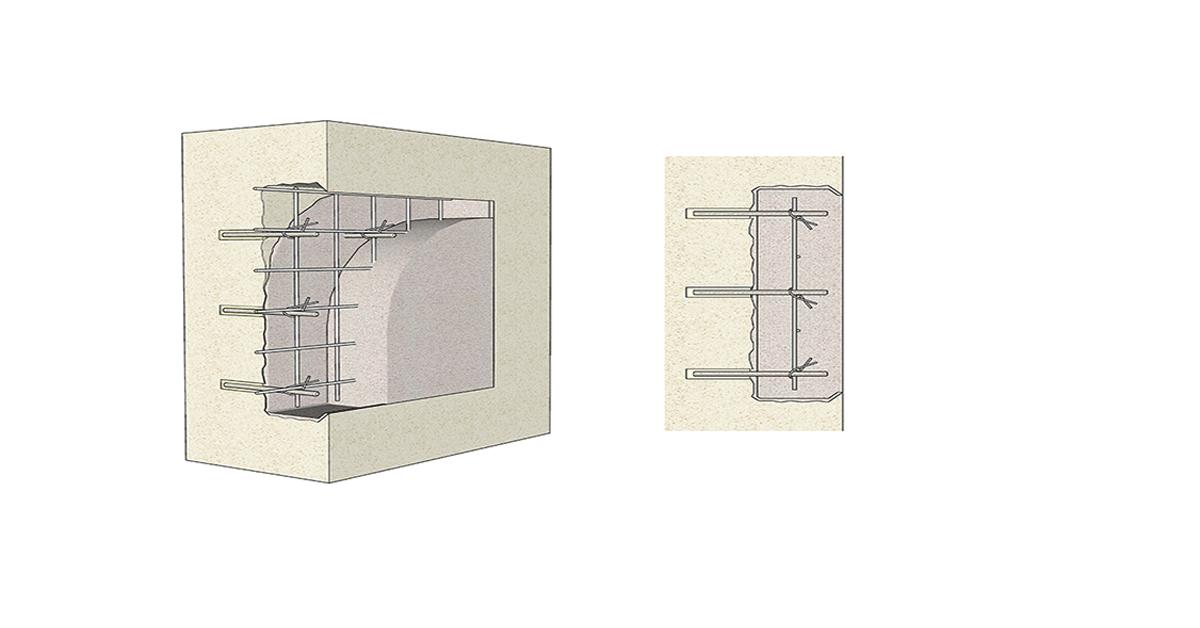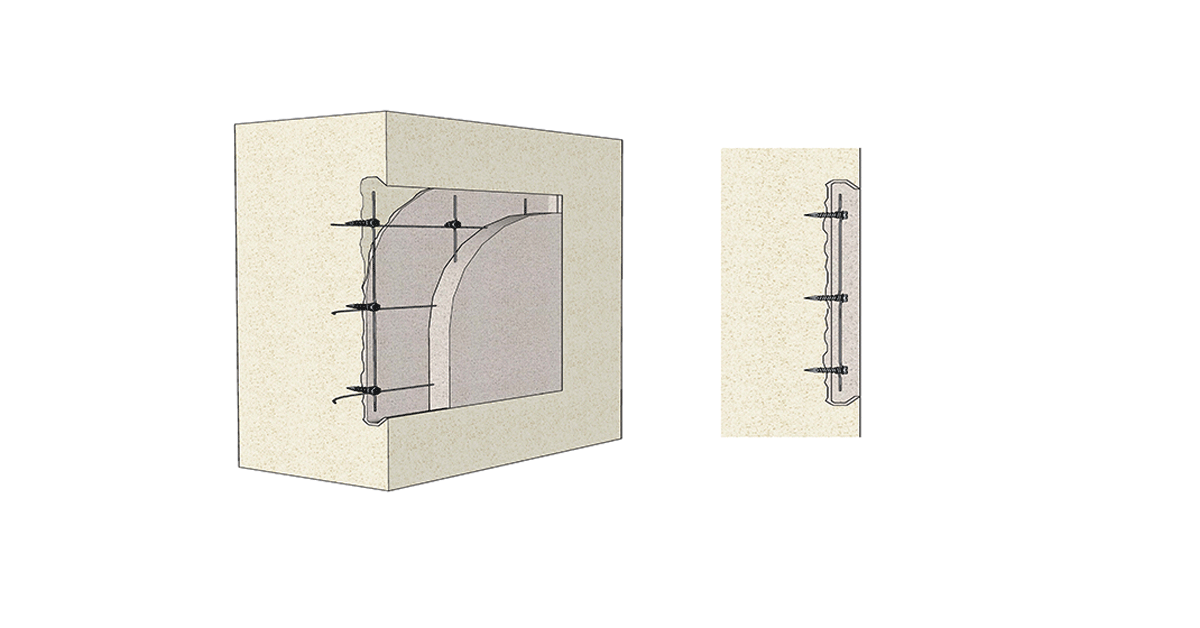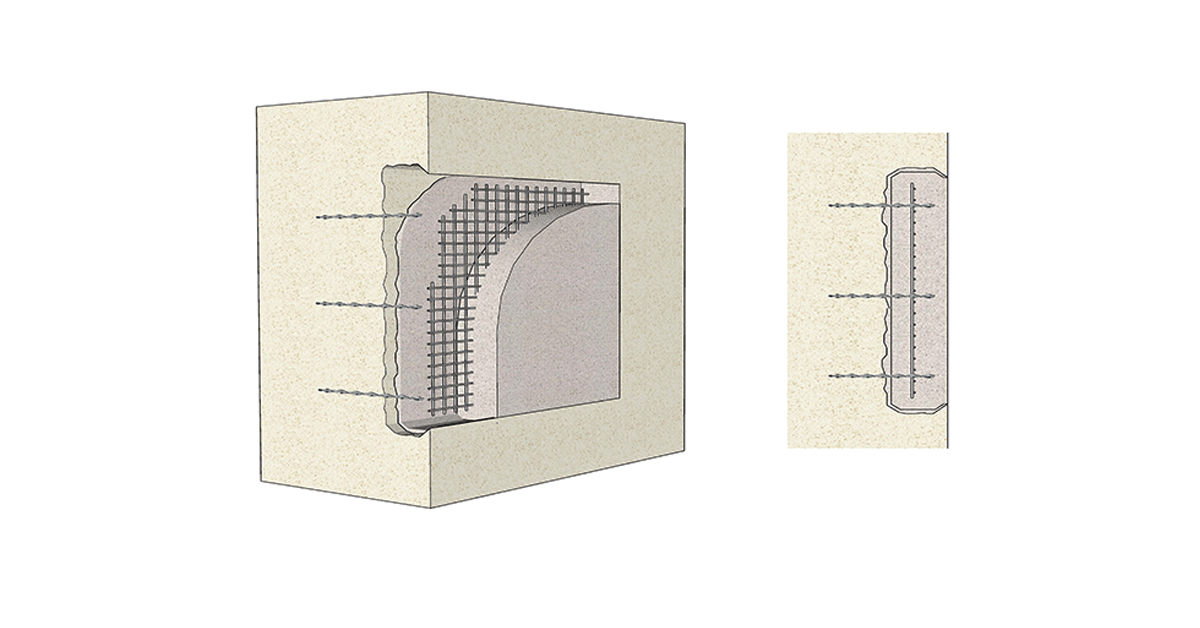Stone damage, such as spalling and cracking, that is too great to repair in situ may need full replacement. In cases where a portion of the stone is damaged, it may be able to be partially replaced with a dutchman repair. In both cases, it’s critical to understand the type of stone, its minerology, secondary minerals, properties, and inherent variability in its properties. Replacement stone or stone dutchman should have similar compatible properties to the original stone. Replacement stones that are stronger and denser, or have lower porosity and water absorption, can cause premature future failures of the historic or existing stone wall assembly. Testing and mockups are important to ensure compatible materials that aesthetically match are selected.
In the case of thin dimension stone veneers, where damage is due to the existing stone panels having properties not appropriate for the thin application, (for example, white marble that has undergone hysteresis, bowing, and failure at anchors), a more robust replacement material should be selected. Historic buildings will need an alternative replacement material that has higher strength and density, while matching aesthetically. This situation can be challenging, requiring a close review of the material properties and potential upgrades to the anchorage systems.
Localized stone damage, such as spalls, can also be repaired in situ using cementitious composite repair mortars. These proprietary bagged material blends vary in the type of cementitious material, sand, and admixtures. Latex and acrylic polymer admixtures are included in some proprietary mixes to assist with bond and limit shrinkage; however, polymers also lower the water absorption and trap moisture behind the patch site. Review the product data sheets, or have the materials tested, to select materials that have similar properties (for example, strength, density, porosity, and water absorption) to the original stone. Best practice details for composite mortar repairs should include supplemental anchorage for small, medium, and large repair areas.
Crack repair options depend on if the crack is moving or stable and its width. If still moving, as determined with a crack gauge, then a flexible material, like sealant, may be appropriate. If the crack is no longer moving, then a more rigid repair material, like a mortar or epoxy, may be the solution. Supplemental anchors may be required to secure each side of the crack, especially for wide structural-compromising cracks. Anchor type, size, and embedment depth will need to be appropriately selected for the type of stone, backup, and assembly configuration. Pull–out anchor testing should be required during mockups to ensure the anchor meets the lateral strength requirements and continued testing during the project should be required for quality assurance.
Natural stone that’s strong and dense may offer greater resiliency; however, less strong and more porous stone will require sensitive treatment. Abrasive and chemical cleaning treatments that damage the surface leave the stone open to accelerated weathering and lower its resiliency. Maintaining a durable stone facade requires that repair or cleaning treatments not damage the stone. Protecting the stone surfaces is also important in retaining the historic character and aesthetic qualities of the stone.
With repair and restoration projects, it’s important to understand the properties of the existing stone wall system, material properties, and anchorage prior to selecting replacement materials and repair strategies. The following field and laboratory testing may be needed for stone facade evaluation.
Field Testing:
- Masonry deformability properties, Flatjack
| | | | - Thermal and moisture properties
|
- Non-Destructive Evaluation (NDE)
| - Rebound Hammer for material hardness
| - Pachometers for metal location
| - Stress Wave Transmission for material soundness
| - Infrared Thermography for material moisture and temperature differences
|
Laboratory Testing:
- Compressive Strength, Density, Porosity
| - Water absorption – cold and boiling
| | | |
| | | - Salt/deposit identification analysis
| |



